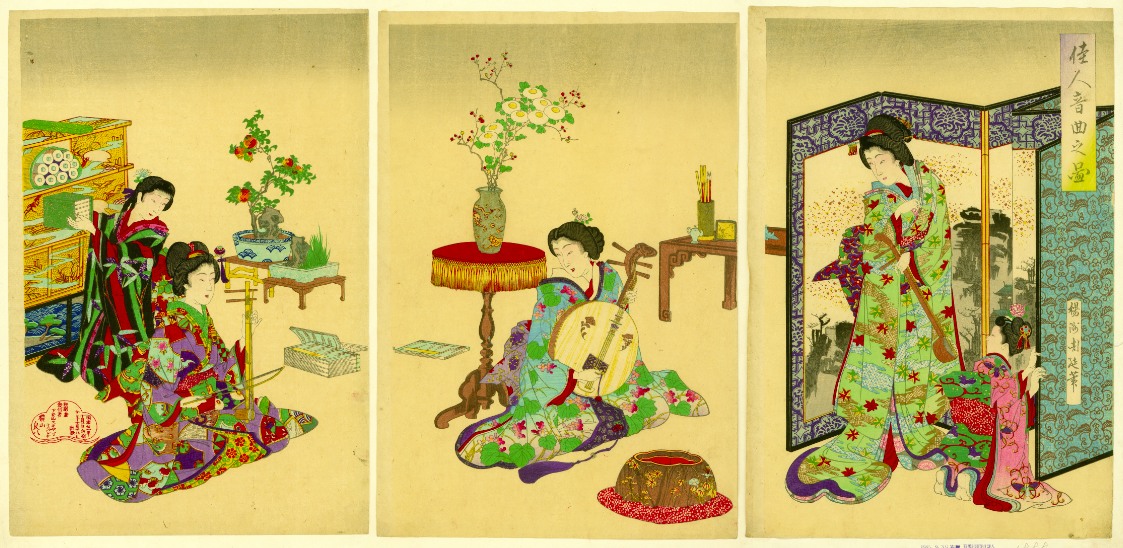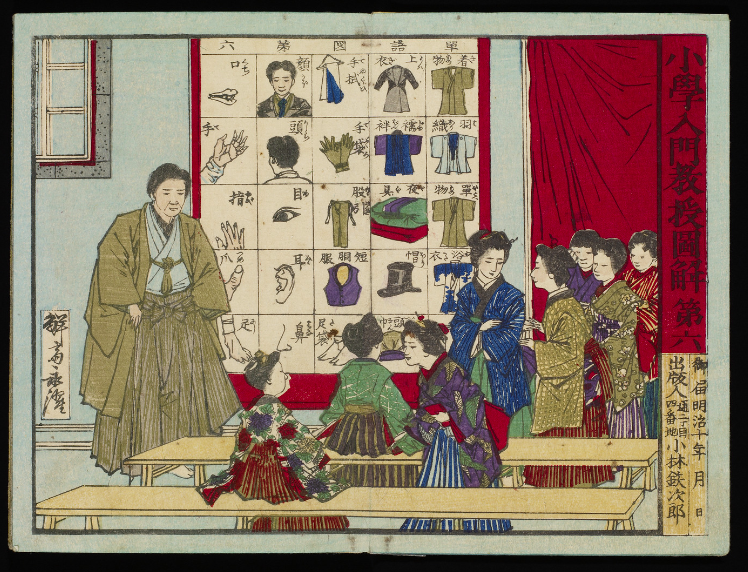
If you want to appreciate Japanese books, it helps to be able to read Japanese books. It helps, but it’s not 100 percent necessary: even if you’ve never learned a single kanji character, you’ve probably marveled at one time or another at the aesthetics of Japan’s print culture. Maybe you’ve even done so here at Open Culture, where we’ve previously featured archives of Japanese books going back to the seventeenth century, a collection of Japanese wave and ripple designs from 1980, a Japanese edition of Aesop’s Fables from 1925, and even a fantastical history of America from 1861 — all of which display a heightened design sensibility not as easily found in other lands.

The same even holds true for Japanese schoolbooks and other educational materials, a digital archive of which you can explore on the web site of Japan’s National Institute for Educational Policy Research. “Ranging from brush painting guides to elementary readers to the geography of Koshi Province — now the Hokuriku region — hundreds of digital scans reveal what students were learning in school more than 100 years ago,” writes Colossal’s Kate Mothes.
Certain publications, like the epistolary 冨士野往来 (“Mount Fuji Comings and Goings”) from 1674, date back much further. But only a couple of centuries later did Japanese books start integrating the colorful artwork that still looks so vivid to us today. You’ll find particularly rich examples of such books in the sections of the archive dedicated to educational pictures, wall charts, and sugoroku, a kind of traditional board game.

Originally produced, for the most part, in the mid-to-late nineteenth century (though with some items as recent as the time of World War II), these provide a look at the worldview that Japan presented to its young students during a period when, not long emerged from more than 200 years of deliberate isolation, the country was taking in foreign influence — and especially Western influence — at a breakneck pace.

But despite a variety of proposed dramatic language reforms (which would later include the wholesale adoption of English), Japan would continue almost exclusively to speak and read Japanese. If you’re interested in learning it yourself, the reading materials in this archive will surely work as well for you as they did for the students of the eighteen-nineties. And even if you’re not, they’re still timeless object lessons in educational illustration and design. Enter the collection here.

via Colossal/Present & Correct
Related content:
Download Classic Japanese Wave and Ripple Designs: A Go-to Guide for Japanese Artists from 1903
Based in Seoul, Colin Marshall writes and broadcasts on cities, language, and culture. His projects include the Substack newsletter Books on Cities, the book The Stateless City: a Walk through 21st-Century Los Angeles and the video series The City in Cinema. Follow him on Twitter at @colinmarshall or on Facebook.


Leave a Reply